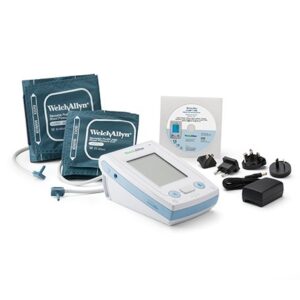Breast cancer should be a topic of concern amongst many women as it continues to affect many around the globe. With multiple options available for this ailment, this may prove to be a nightmare when searching for the best one available.
This is in the form of a cocktail of doxorubicin and cyclophosphamide. This treatment strategy has been in the limelight owing to its ability to tackle breast cancer more aggressively as opposed to the conventional approach.
But what exactly does this treatment entail? Is it effective? What can patients expect during their journey?
These are some of the many questions we will try to answer. In this post, we’ll share stories about dense-dose doxorubicin and cyclophosphamide, where we discuss the effectiveness, potential side effects, and positive outcomes from patients that will give them hope.
This information will help you treat the condition properly, whether you are facing the struggle by yourself or raising a loved one’s spirit.

Understanding Breast Cancer Treatment
One of the most challenging cancers treated today is breast cancer. As research and science have progressed, the treatment options have also changed to provide something to every patient. What all these options are should be realized to be able to make the best-informed decision.
Doxorubicin and cyclophosphamide can provide many benefits to patients. Typically, the treatment regimen for breast cancer involves a combination of surgery, radiation therapy, and systemic therapies such as, chemotherapy and/or hormone therapy.
Chemotherapy is still a cornerstone when it comes to treating aggressive forms of breast cancer, as it is expected to eliminate fast cells all over the body with the least amount of healthy tissue damage.
Now, personalized medicine comes in handy as well. The science of genetics can assist in locating mutations which in a way assist in selectively targeting therapies for the given patient.
This is a rather complex space and in many cases, patients will require help from specialists to assist them in determining what the best course of action would be for them or their loved ones suffering from this condition.
What is Dense Dose Doxorubicin and Cyclophosphamide?
A dense dose of doxorubicin and cyclophosphamide is a classic example of a chemotherapy protocol used in the management of patients with breast cancer. The technique comprises using high doses of the two chemotherapy drugs in a short time interval to increase their potency against poorly differentiated tumors.
Doxorubicin is a member of the anthracycline antibiotic class of compounds, and it acts directly cancer-causing the DNA of the cancer causing cells, which then inhibits their ability to grow and replicate. Cyclophosphamide on the other hand is also an alkylating agent that causes DNA damage but in a distinct manner. Collectively they possess a tougher approach against cancer cells.
Patients undergoing a dense dosing schedule can expect multiple cycles within a few weeks as opposed to months. This can help in achieving better response rates while monitoring the patient’s health closely.
The ‘dose dense’ regimen, for some types and some stages of breast cancer, is a preferred option by some clinicians as an immediate intervention may be required in more aggressive tumors. Of course, the individual patient factors are important and treatment approaches must be individualized.
Effectiveness of Dense Dose Doxorubicin and Cyclophosphamide for Breast Cancer
Dense Dose Doxorubicin with Cyclophosphamide which is also known as AC has helped in the management of breast cancers. This kind of treatment is characterized by the use of strong doses of chemotherapeutic drugs over a much reduced time interval.
Studies of this type might increase the therapeutic effects of the regime and assist in combating more malignant varieties of breast cancer. Most studies have shown that when patients have these drugs densely packed their outcomes improve.
Patients notice that there is a more rapid decrease of the tumor size as compared to tr regimens. For most of the people, such an effect leads o , more complete response rates tod on occasion, this occurs before surgery.
Of course, the strategy also aims to destroy the remaining tumor volume as well as prevent the occurrence of newly grown tumors in the future. However, the variation in intra and inter-patient responses is quite substantial which demands the patients to consult with the physicians regarding their case particulars.
Potential Side Effects of Dense Dose Doxorubicin and Cyclophosphamide
It is possible to administer dense doses of doxorubicin and cyclophosphamide resulting in a suess however, this dose has a wide range of possible side effects. It is important to note this when considering this approach of treatment for the first time.
It is common for people to feel nauseous or develop vomiting episodes after taking medication. This occurs quite often after administration of the medication. Quite a several patients have been able to control their nausea using anti-emetic drugs.
Loss of hair can also occur due to progressive forms of both drugs resulting in damage to hair follicles. Most people get upset with hair fall but the good news is that hair tends to come back once the treatment is over.
Few patients also develop some alterations in the hemogram count leading to immunity deficiency or anemia. Such patients under the supervision of health professionals should reduce such risks.
How to Prepare for Treatment
Even though planning and going for the treatment is an overwhelming task, such plans and worries may be avoided if one is prepared and knows well what to expect. To begin with, all relevant medical history with test results should be obtained and analyzed for ease of records. Keep drinking water close by at all times as well and keep track of toiletries.
Then, try to ask any questions or express any concerns beforehand with your doctors. They will surely explain any such worries. The course of treatment and its schedule must also be clearly understood.
In addition, it would be a good idea to schedule transportation for your appointments, as some side effects may make you less mobile after treatments. Where possible, take someone with you; emotional strength can make all the difference.
You may also wish to consider a change in your eating options before commencing treatment. Good diets allow the nutrition of your body and its immune system to be in optimal condition.
When recovering at home enjoy free days but prepare in advance for such occasions. Prepare blankets and books or your favorite videos for a rainy day when most of your energy is lacking.
Success Stories from Patients
With the aid of dense-dose doxorubicin and cyclophosphamide, many patients’ lives have permanently improved. Consider Sarah for instance. After the diagnosis, she dreaded the thought of treatment but it was something that she had to face. The rigorous treatment that she underwent was indeed worth it; she was now in a much better position than before.
We also share the story of John who, along with another sister, witnessed their sister fight breast cancer. She responded well to the combined therapy; within a few months, she was cancer-free. Their life together during this whole period revolved around not only the medical treatment but the strong emotions that were created during treatment also.
After the completion of their cycles, cancer patients report marked improvement in their conditions and expect to improve even more after this. The patients take the treatment as if it’s a battle with its own set of challenges. A battle that unfortunately does bring forth significant troubles and dark clouds beyond the usual.
These narratives do highlight that though every encounter is different, community involvement is instrumental in the healing process. It speaks volumes of human resilience in the middle of challenges and is an optimistic pointer that better times are indeed awaiting.
Other Considerations and Alternatives
While looking for what aspect of care to manage next, it’s proper to look at it in its entirety. Large amounts of doxorubicin and cyclophosphamide are potent for sure, but they are not the only options.
Some patients are likely to replace them with either targeted therapies or immunotherapies depending on their tumor features. These therapies are safer as they target specific tags and are more effective.
Lifestyle change could also assist in maintaining one’s overall health at this stage. It is undeniable that nutrition, physical activity, as well as mental health, are determinants of treatment and survivorship from cancer.
Peculiarly, other therapies such as acupuncture and mindfulness, could augment the orthodox treatment. These can promote a sense of happiness that even reduces the stress that is experienced in the course of the journey.
Alternatives such as these are to be consulted with the healthcare providers. There is a range of factors that every patient possesses which should be utilized when the therapy is determined for the patient.
Conclusion
In the case of breast cancer patients considering options of treatment, dense-dose doxorubicin and cyclophosphamide are an approach that is quite relevant. This schedule aims to ensure maximum benefits while also keeping adverse effects in check.
Quite a few patients treated with this combination therapy have shown valuable effects in fighting aggressive forms of the disease. What people who went through the treatment share concerning their experiences brings inspiration as well as some knowledge of what’s to be expected in the course of one’s treatment.
In life, as in medicine, nobody rushes into any decision without consideration. However, talking in person about your particular case with medical providers can determine what is the most relevant way of proceeding. Be it this high dosage protocol or something different,



We stumbled over here different website and thought I may as well check things out.
I like what I see so i am just following you. Look forward to checking out your web page
again.
Very shortly this site will be famous amid all
blogging viewers, due to it’s pleasant posts